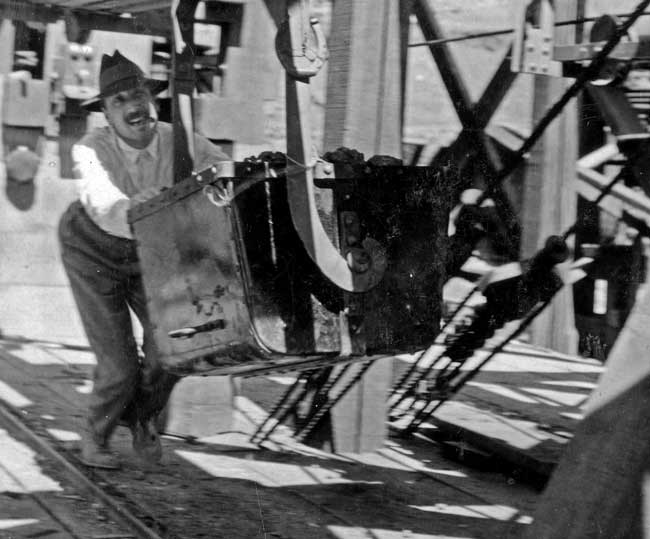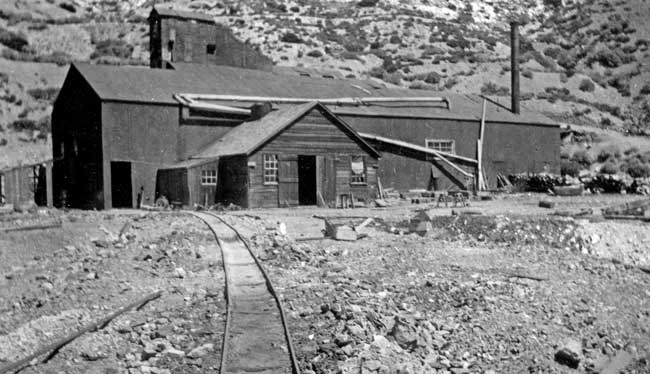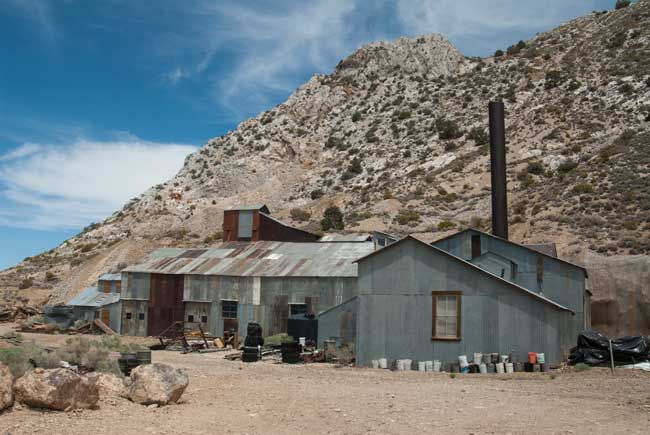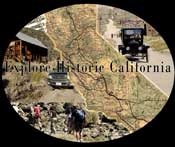|
 |
|
Cerro
Gordo Mines letterhead. The mines were in Owens
Valley, but the corporate offices were located in
the more accessible San Francisco. |
July, 2014, marks the centennial of the
founding of Cerro Gordo Mines Company under Louis D. Gordon
and the mining town's rebirth as a major zinc producer. We
are forever grateful to the late Doug Gordon, L. D. Gordon's
grandson, for making his grandfather's photo archives
available to us.
Louis D. Gordon came to the faded
mining town of Cerro Gordo in 1911 to find the Union Mine little
more than an abandoned pile of burned out ruble. His mine
surveys uncovered reasonable amounts of silver and galena. A
closer look at the zinc that had been tossed aside during the
great Belshaw and Beaudry silver and lead years told him where
the next fortune would come from.
By July 14, 1914, Cerro Gordo was
a boomtown once again. Gordon took title to the property as the
Four Metals Company went under and reorganized the mines. The
Cerro Gordo Mines Company was officially incorporated July 14,
1914, with Gordon as both vice president and general manager.
Cerro Gordo’s great zinc era was well under way.
The old Montgomery tramway was
soon replaced by a Leschen and Sons wire-rope aerial tramway. At
29,500 feeet, this tramway was capable of moving 16-19 tons per
hour. Twenty tons of zinc ore shipped daily from the tramway
terminus at the railroad in Keeler to the United States Smelting
and Refining Company in Utah, where it was processed. Net
earnings for the company from September 1915 to February 1916,
were $40,260.
 |
|
Advertisement for a Leschen tramway. |
The force of gravity pulled the
loaded ore buckets down the hill and the empty buckets back up.
A large brake with three brake bands housed at Cerro Gordo
controlled the speed.
The tram had special buckets that
could be switched on or off the cable at either end of the line
for various services. One barrel like bucket carried heavy
grease and oil. Another built with a chain and ratchet, carried
the heavier pieces of equipment from the rail head.
Like its predecessor, the Leschen
tram was known to have a few brave passengers that ventured to
travel up the 5.5 miles from Keeler to Cerro Gordo in empty
buckets. The first two miles of line progressed from tower to
tower as straight as an arrow.
At the first ridge the tramway was
away and across the sky, clanking along over 800 feet above the
canyon in some places. The company had no problem with
passengers on the ore buckets so long as they carried a canteen
of water in case the cable stopped and they were stranded in the
hot dry desert sun.
Around 1915 large shipments of
slag from the old smelter dumps began. Between 1916 and 1919
nearly 33,000 tons of smelter slag was recovered. The slag dumps
of the Belshaw, Beaudry, and Owens Lake Company smelters were
almost entirely removed during this time period.
At the 900 foot level of the
Jefferson chimney and dike in the Union Mine new deposits of ore
were discovered and 8,022 tons of lead and 750,000 ounces of
silver were produced between 1911 and 1919.
Electricity via the Southern
Sierras Power Company arrived to Cerro Gordo in January of 1916,
replacing the steam power that operated the hoist in the Belshaw
shaft and the tramway machinery.
 |
 |
|
 |
|
A wooden
barrel hangs on a tram carrier near the terminus at
Cerro Gordo (top, left). A similar carrier is used to
transport bundled goods at the Keeler end of the tramway
(top, right). L. D. Gordon pushes off a loaded ore
bucket (above). The Lesshen tram's trminus at the
Southern Pacific rails in Keeler (below). The old Four
Metals Smelter can bee seen in the distance. |
|
 |
A Joshua Hendy 100 horsepower
electric hoist, an Ingersoll-Rand Imperial Type 10 compressor,
and a 150 horse power constant speed motor were installed. In
case of power failure, the old Westinghouse Church and Kerr
steam plant was still maintained.
Although Cerro Gordo was thriving
once again, the success was not as great as it was during the
glory days of Mortimer Belshaw and Victor Beaudry. The Cerro
Gordo Mines Company and others constantly searched for new ore
locations.
Over $6,000,000 of ore was shipped
off the mountain from 1914-1918, making Cerro Gordo the largest
producer of lead and second largest producer of zinc in
California. The boom of the zinc era could be heard in the East
by big money men who definitely liked what they saw.
By the close of World War I,
Gordon was squeezed out by others who wanted to gain control of
his operations. He eventually gave up the fight and allowed the
American Smelting and Refining Company to gain control of Cerro
Gordo Mines.
One hundred years later, the house
that Gordon commissioned for his wife and son to live in during
his reign on the hill, still stands, as does the bunk house
where his workers slept. Scattered among wooden buildings from
the bustling late 1860’s and 70’s, a few tin-sided buildings
remain as testament to the zinc era. Remnants of the tramway
struggle to survive at the base of the tailings piles above
town.
 |
 |
 |
|
A
workman poses next to the Gordon House shortly after
it was built (top). The Union Mine hoist house
during the Gordon era (center). The hoist house
today after restoration (below). |
Beyond the tailings, hidden from
the town view, the recently restored Union Mine Hoist House
gleams in the sun. The wind whistling through the dusty streets
of the old camp now gone to the ghosts whispers the sounds of a
bygone time. A caretaker and a handfull of volunteers struggle
to keep the buildings and histories alive for a new
millennium.
